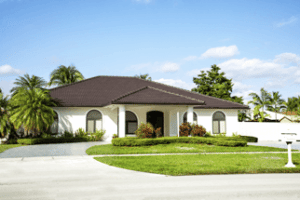Every winter, snowbirds flock from colder northern climates to warmer southern regions. While many of these retirees come from the northern United States, some of them hail from neighboring Canada. Though Canadian snowbirds share much in common with their American counterparts, crossing the border brings additional concerns. Doug Gordon is one Canadian snowbird who has been wintering in the United States for the past eight years.
International Snowbird Taxes
While Doug and his wife have enjoyed their winter visits to Arizona and California, they’re careful not to stay longer than the allowed 182 days per year. If they were to exceed this limit, they would be required to pay taxes in both countries.
Like many snowbirds, Doug acknowledges, “[The taxes] would be a kind contribution for allowing us to hunker down under the wonderful California sun for the winter, but we choose to count the days.” While they can appreciate the reasons behind the laws, double taxation is a cost that most snowbirds can’t afford.
Fortunately, these extra taxes can be avoided by staying only as long as allowed by law. Canadians who visit the United States for less than 30 days in a calendar year are simple “visitors” and don’t have to worry about taxes. If a Canadian’s visit extends more than 182 days in a calendar year, they are considered a “resident alien” for tax purposes and must file a regular U.S. tax return.
Having a “Substantial Presence” in the U.S.
Canadian snowbirds whose visits fall between 30 and 183 days in a single calendar year still may meet the criteria for having a “substantial presence” in the United States. However, having a “substantial presence” doesn’t necessarily mean that snowbirds will be required to pay U.S. taxes. They’ll need to file Form 8840 Closer Connection Exception Statement for Aliens with the U.S. Internal Revenue Service (IRS). Failure to file this form could result in hefty fines, even if no taxes were owed.
There’s a simple formula to determine if a Canadian visitor meets the criteria for a “substantial presence:” Add the number of days visited during the current calendar year, plus 1/3 of the days visited in the previous year, and 1/6 of the days visited in the year before that.
Let’s say a Canadian couple visited the United States for 130 days in 2009, 120 days in 2008, and 120 days in 2007. They would add 130 days, plus 40 days (1/3 of 120), plus 20 days (1/6 of 120 days) for a total of 190 days. Since this is more than 182 days, the couple would meet the criteria for a “substantial presence” and be required to file Form 8840 with the IRS.
Purchasing a Winter Home in the U.S.
When Canadians purchase a winter home in the United States, the tax laws can be complex, especially when the home is rented out while the homeowner is away. Before purchasing a home, Canadians should become familiar with the tax laws that will affect their ownership, both in the United States and in Canada. If a homeowner passes away while retaining ownership, their winter home will also be subject to U.S. estate tax laws.
Planning for Medical Care While Away
Like most Canadian snowbirds, Doug and his wife recognize the need to plan for medical care or emergencies while visiting the United States. Doug’s approach will likely sound familiar to other visiting snowbirds: “We purchase travel insurance before leaving, visit urgent care if needed, or get on a plane and get home if necessary.”
Travel medical insurance is an important consideration when Canadians plan an extended visit to the United States. Though it certainly helps to have a physical examination and fill prescriptions before leaving Canada, travelers should be prepared for illnesses or accidents that may come up during the visit. Travel medical insurance will help protect visiting snowbirds from the high costs of an uninsured emergency or urgent care visit.
More Information
Because they’ll be wintering in another country, Canadian snowbirds must also consider currency exchange rates. It’s best to plan ahead when exchanging currency. By watching the rates as they change, Canadians can purchase U.S. Dollars to their advantage.
The Canadian Snowbird Association (CSA) is a not-for-profit organization that offers a wealth of information to educate and support Canadian travelers. Members can also enroll in the Snowbird Currency Exchange Program, join the CSA Auto Club, or find information about recommended travel medical insurance.
Through organizations like the Canadian Snowbird Association, reliable online sources, and the help of fellow travelers, Canadian snowbirds can accomplish their dreams of wintering in a warmer climate. With a little planning, it’s easy for snowbirds to divide their time between two homes, even if those homes happen to be in different countries.











